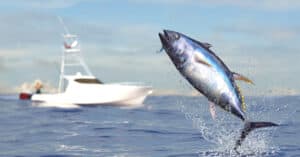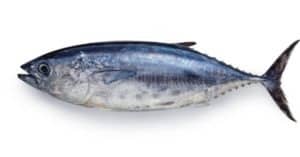Many people think there is only one kind of tuna, the one that comes in a can. But there are various tuna species. While most types of tuna are edible, only five are regularly used for consumption in the West anyway. They include Skipjack, Albacore, Yellowfin, Bigeye, and Bluefin tuna. However, there are eight important types of tuna every good fisherman should know, each with different tastes, colors, and textures. As a result, each species complements a specific dish. For example, some tuna works best as a steak, while others make delicious sushi or protein in a salad. Furthermore, each specie comes at a different cost, which is why sushi is more expensive than canned tuna. Below are the most important types of tuna to know.
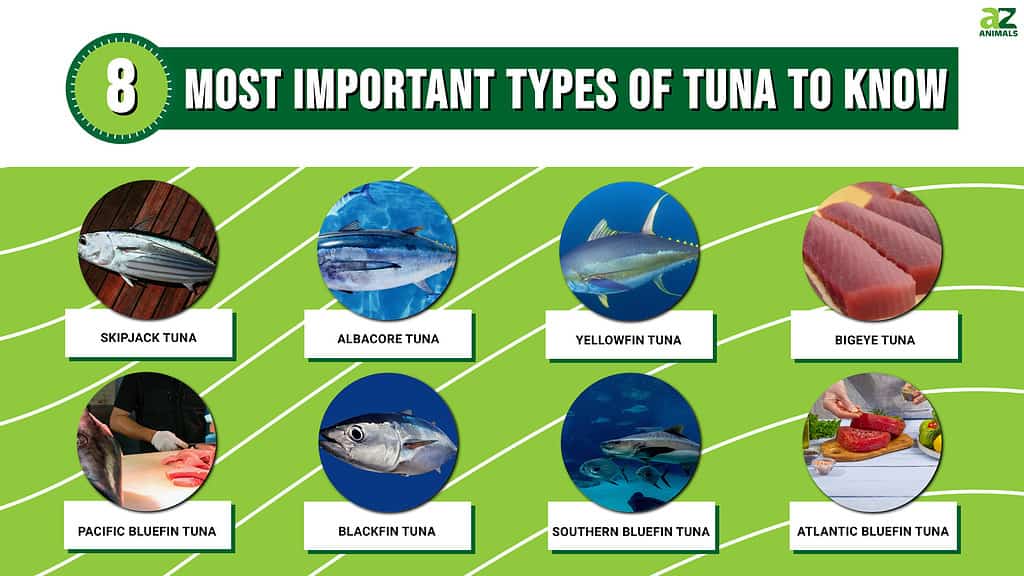
1. Skipjack Tuna
Skipjack tuna is the most commonly found in canned tuna. They are small in size and have dark meat. In fact, Skipjack tuna accounts for over 70% of the United States canned tuna market. What makes them so desirable is the texture of their meat, which is tender and allows for small chunks. Additionally, these tuna have a strong, fishy taste. When a can of tuna has “Chunk Light” on the label, there’s a good chance it’s Skipjack tuna.
These tuna occur in the Pacific, Atlantic, and Indian Oceans. Since they have relatively short life cycles, Skipjack tunas sexually mature at an early age (approximately one year old). As a result, when these fish are caught, they likely already spawned at least once in their lifetime. Therefore, Skipjacks have large population numbers and currently aren’t threatened. These tuna reach lengths of 3 feet and weigh around 40 pounds. On average, Skipjack tuna costs $23 per pound.
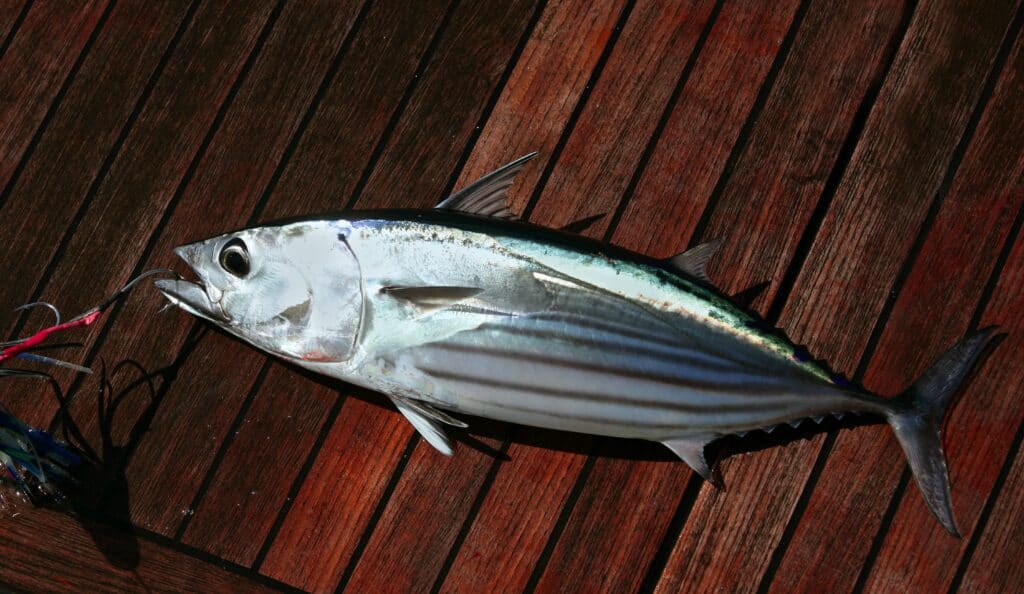
These tuna reach lengths of 3 feet and weigh around 40 pounds. On average, Skipjack tuna costs $23 per pound.
©iStock.com/LUNAMARINA
2. Albacore Tuna
Albacore is another popular choice for canned tuna. Therefore, it is the second most variety for canned tuna in the U.S. These types of tuna have light meat and a mild flavor, hence the nickname “white tuna.” Unlike Skipjack, Albacore tuna comes in larger chunks and tends to be more expensive. Additionally, they are delicious when grilled, and the meat holds together well. However, their mercury levels are three times higher than Skipjacks, which is concerning. As a result, the Environmental Defense Fund advises limited consumption of Albacore. They weigh significantly more than Skipjacks, averaging around 90 pounds, and measure approximately 4 feet long. Albacore tuna averages about $25 per pound, but prices vary depending on location and several other factors.
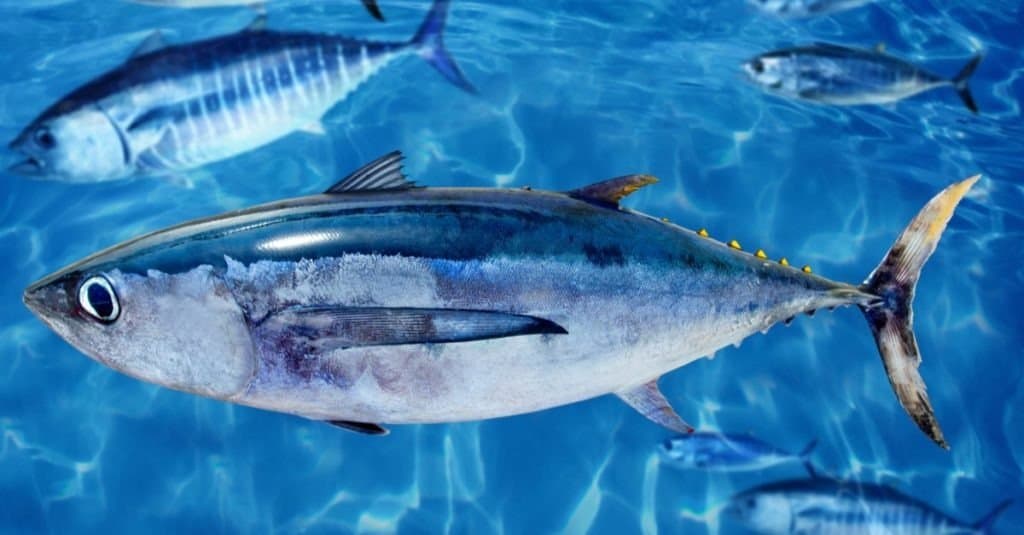
Albacore tuna averages about $25 per pound, but prices vary depending on location and several other factors.
©lunamarina/Shutterstock.com
3. Yellowfin Tuna
One of the most versatile types of tuna is Yellowfin. Its meat is mild in flavor and pale pink. While yellow is available in cans, it is best fresh in the form of sushi or steak. However, Yellowfin is a popular option for sushi in the United States because it is reasonably priced and offers value for money. Additionally, people like it for its leaner meat and subtle taste.
Yellowfin is mainly used as steak in the USA, and you can often find them in restaurants for a fair price. Furthermore, many supermarkets and seafood stores stock them, so they are readily available if you have a craving. You can expect to pay around $35 per pound for Yellowfin. On average, these tunas weigh between 120 to 140 pounds, but their maximum weight is 400, and they can grow 6 feet long.
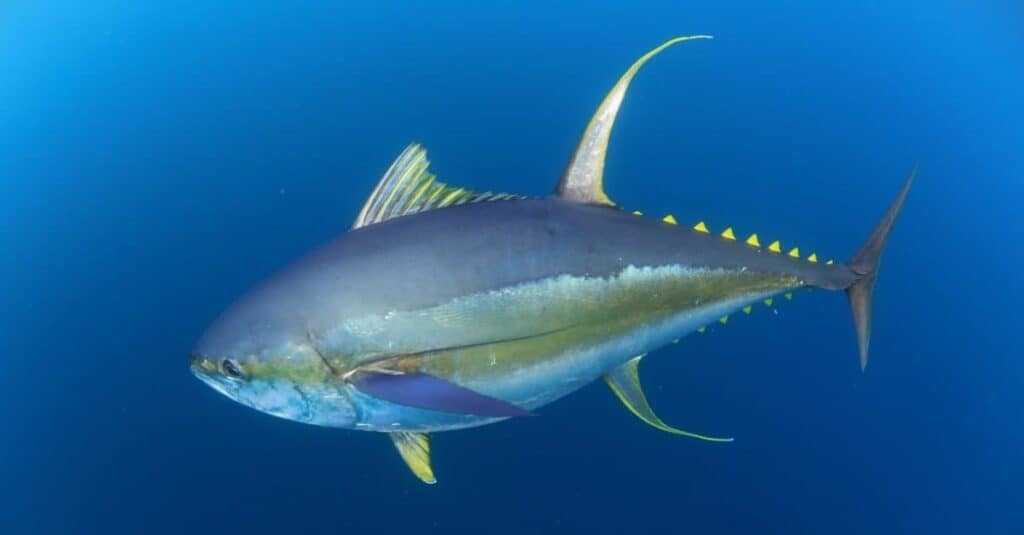
While Yellowfin is available in cans, it is best fresh in the form of sushi or steak.
©Al McGlashan/Shutterstock.com
4. Bigeye Tuna
Bigeye tuna is a good choice if you are looking for a lot of flavor. This large, stout tuna has firm, bright meat and bursts with flavor. It is a good option for people on a budget looking for fattier meat. However, while they are more affordable than other types of premium tuna, they aren’t exactly cheap. For example, a portion of Bigeye sashimi in a sushi restaurant can cost over $20. As a result of their growing popularity, Bigeye tuna are at risk of overfishing. Therefore, the IUCN has them listed as Vulnerable. These tuna are large, weighing 400 pounds and measuring 7.5 feet long. In addition, their average cost is around $42 per pound.
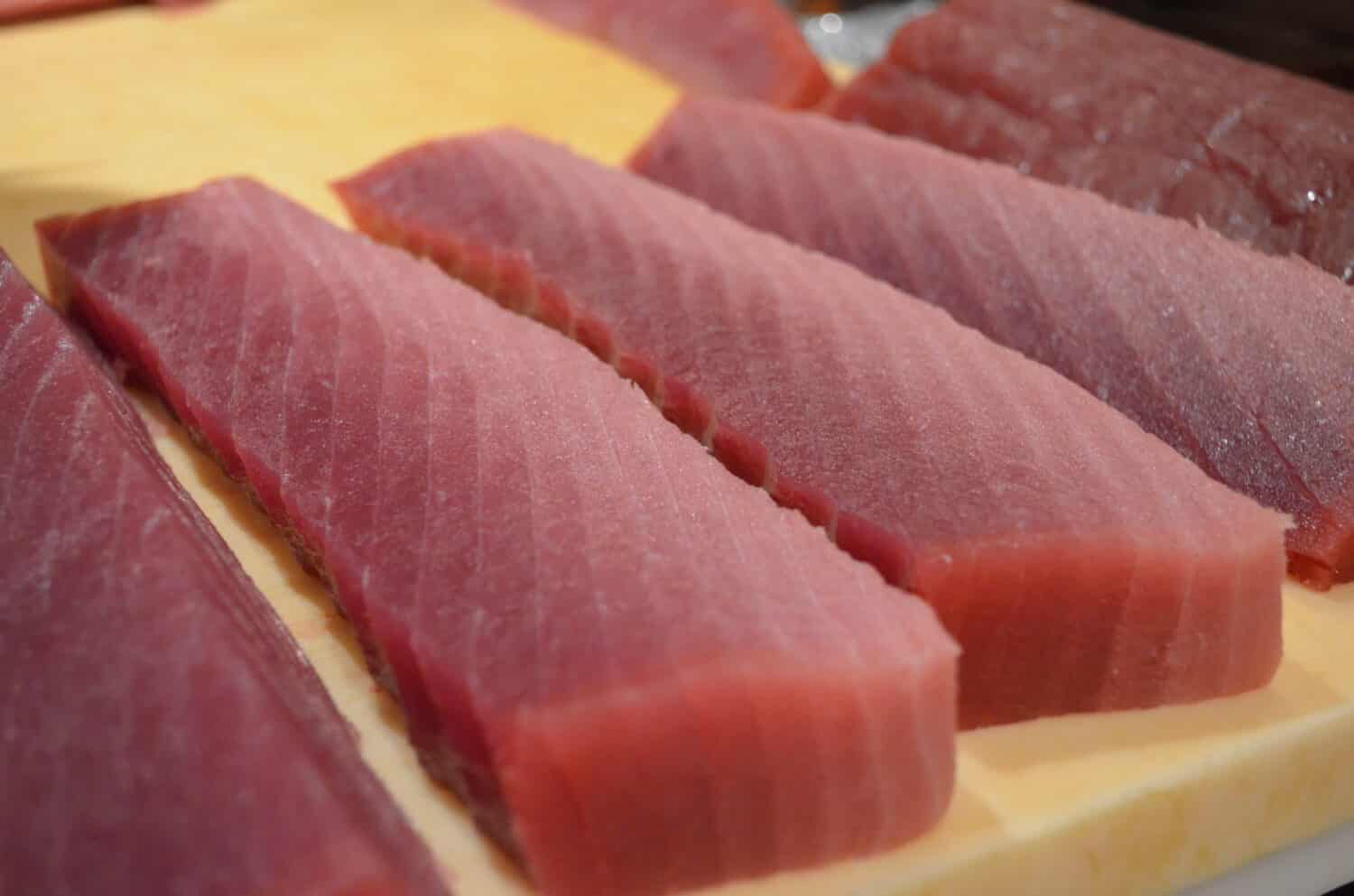
A portion of Bigeye sashimi in a sushi restaurant can cost over $20. As a result of their growing popularity, Bigeye tuna are at risk of overfishing.
Image: AIVRAD, Shutterstock
©AIVRAD/Shutterstock.com
5. Pacific Bluefin Tuna
This massive fish can grow up to 10 feet long and weighs approximately 500 to 600 pounds. However, there are bluefins on record weighing over 1000 pounds! That’s why many people refer to it as the king of tuna. Pacific bluefin tuna is a pelagic fish, meaning they swim in open water. These tuna are notorious for their delectable taste and are often consumed as sashimi. They are so in demand in Japan that bidders at the market usually pay exorbitant prices. These giant fish can cost between $20 to $5000 per pound.
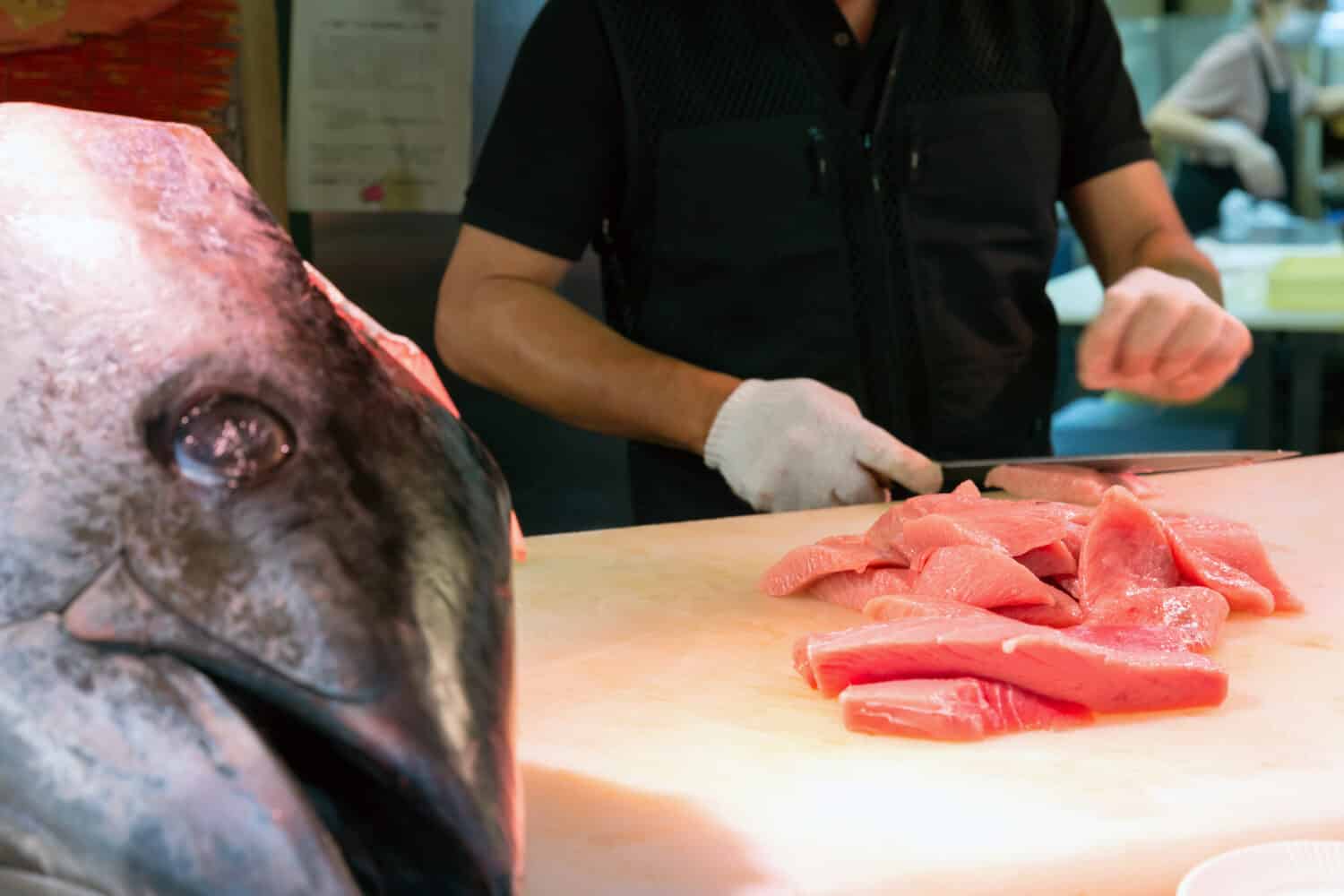
This massive fish can grow up to 10 feet long and weighs approximately 500 to 600 pounds. However, there are bluefins on record weighing over 1000 pounds!
Image: Peera_stockfoto, Shutterstock
©Peera_stockfoto/Shutterstock.com
6. Blackfin Tuna
The blackfin tuna is smaller than most of the more popular types, measuring around 3 feet long and weighing approximately 45 pounds. These fish occur in the Atlantic Ocean but travel as far north as New York and south to Brazil. These tuna are notorious for their fight, so catching one is not easy. Blackfin tuna is mainly used in sushi. Their meat is tender and has a mild flavor, making it perfect for sushi. Blackfin tuna retails for around $7 to $8 per pound.
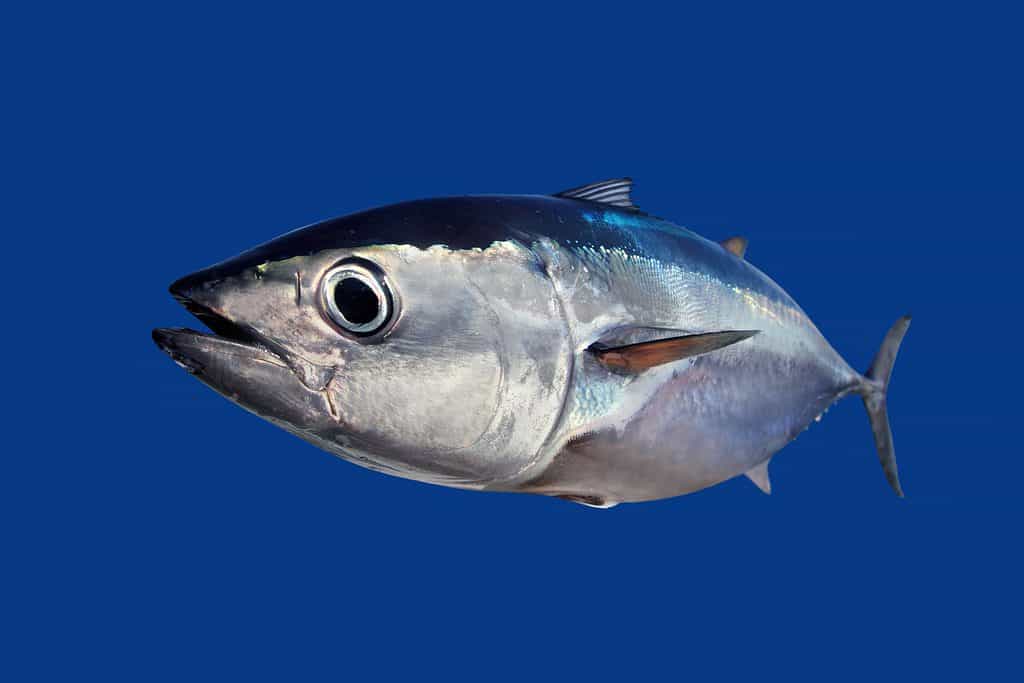
Blackfin tuna is mainly used in sushi.
©lunamarina/Shutterstock.com
7. Southern Bluefin Tuna
Much like its Pacific bluefin counterpart, the Southern bluefin tuna is also highly sought-after for its meat. They are mainly targeted for their size and taste. However, their notoriety has led to overfishing, and their population has dramatically declined in the last few years. As a result, stricter laws were put in place that restrict how many pounds of Southern bluefin each country can catch. These massive tuna can weigh up to 600 pounds, and their maximum length is around 8 feet long. They occur in the oceans of the Southern Hemisphere, like the southwest Pacific Ocean, southwest and southeast Atlantic Ocean, and eastern and western Indian Ocean. This fish can vary in price, ranging from $40 to $200 per pound.
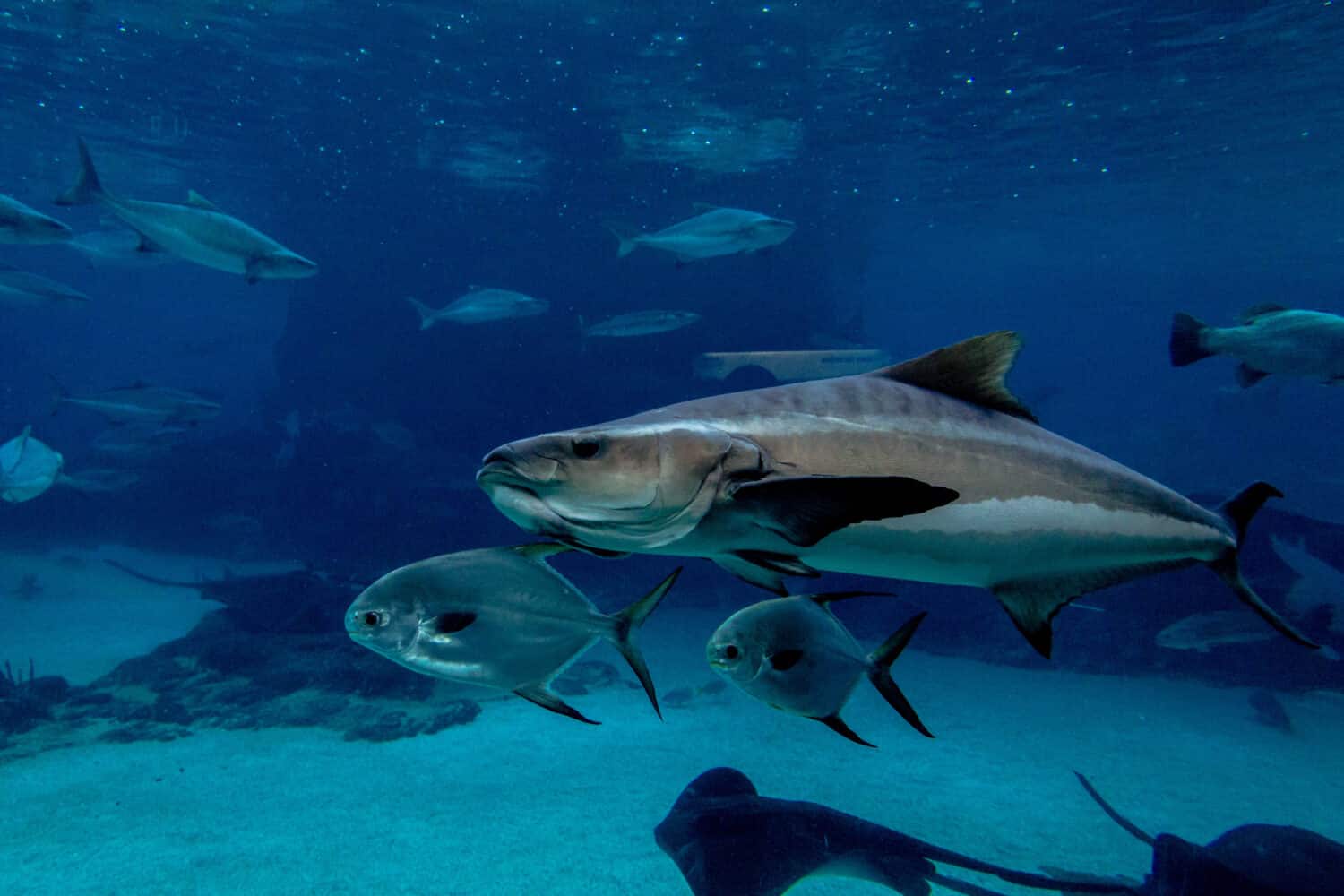
Much like its Pacific bluefin counterpart, the Southern bluefin tuna is also highly sought-after for its meat.
Image: Shaun Robinson, Shutterstock
©Shaun Robinson/Shutterstock.com
8. Atlantic Bluefin Tuna
Another type of bluefin is the Atlantic bluefin tuna, and like the others, it is massive. These fish can grow more than 1000 pounds and are known for their delicious meat. They are also highly sought-after in the raw-fish Japanese market, where bids can get out of control. Most of the sushi and sashimi in Japan include Atlantic bluefin tuna. Due to its high demand, Atlantic bluefin is on its way to being overfished, so many rules and regulations are now in place about how it’s caught. However, many believe that stricter regulations should be implemented. Their price can range from $20 to thousands of dollars per pound.
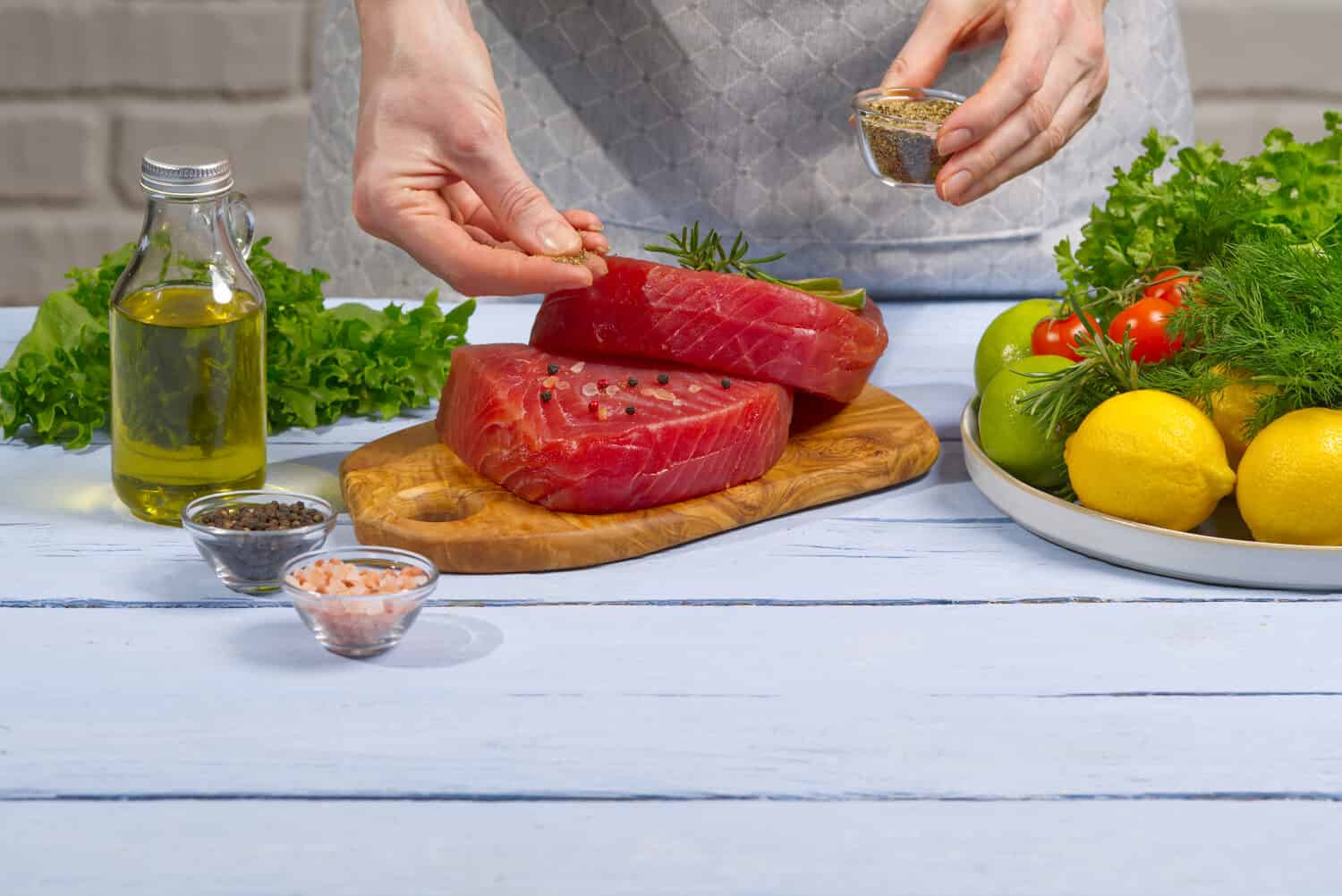
Another type of bluefin is the Atlantic bluefin tuna, and like the others, it is massive. These fish can grow more than 1000 pounds and are known for their delicious meat.
Image: InFocus.ee, Shutterstock
©InFocus.ee/Shutterstock.com
The photo featured at the top of this post is © lunamarina/Shutterstock.com
Thank you for reading! Have some feedback for us? Contact the AZ Animals editorial team.



